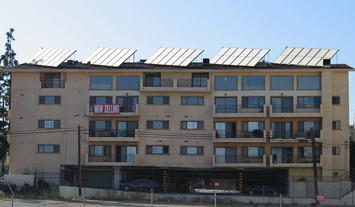
In much of the country a powerful energy boom is providing a serious stimulus to economic growth. But in California, where fossil fuels are considered about as toxic as tobacco, we are lurching toward an anticipated energy shortage that will further exacerbate the state’s already deep geographic and class divisions.
California, in a typical feat of “virtue signaling,” has committed the state to getting half of its electrical power from renewables such as wind and solar, up from 16 percent today, within the next decade. This drive has meant the rapid abandonment of electricity generated by nuclear power as well as natural, gas which together comprised nearly 70 percent of all electricity production in 2015.
This may not end well. California Public Utilities Commission President Michael Picker suggested recently that we could soon return “the kind of crisis we faced in 2000 and 2001.” The rapid abandonment of existing reliable energy sources makes the state, in the estimate of the Institute for Energy Research, “vulnerable to rolling blackouts.”
An electric future without electricity?
Los Angeles Mayor Eric Garcetti’s recent decision to not invest in L.A.’s existing natural-gas plants took place against the advice of staff at the Department of Water and Power. Silly realists, they worried about the ability of the city to generate all its power off of renewable sources, which tend to be unreliable and intermittent. Cold weather this year already stressed the natural gas supplies of the city.
If the mayor insists on transforming Los Angeles into a “green” paradise, expect much higher prices, and greater energy instability. California is already the second most expensive state for energy in the continental U.S. Similar policies have been responsible for high energy prices, and little greenhouse gas reductions, in such diverse places as Germany and Australia.
This is occurring, remarkably enough, as our political leaders commit to forcing more Californians to electrify everything — our heating and cooling systems as well as our cars. To meet the demand generated by electric cars alone, according to one recent estimate, would require 50 percent more electricity than today. This is occurring as we are not adding capacity but stripping it away from reliable nuclear and natural gas sources.
Creating dependency
The price of our leaders’ green virtue will fall particularly hard on working-class Californians who already suffer the nation’s highest rate of people living in poverty. They also tend to live in less-temperate geographies such as the Inland Empire, the high desert and the Central Valley. Expect the recent moves to expand the ranks of the million Californians who suffer from “energy poverty,” defined as spending 10 percent or more of their household income on energy-related expenses.
Our economic dependency is worsened by the fact that California, once a major energy exporter, has adopted a bizarre policy that restricts not only local production but restricts imports from places such as North Dakota and Texas. Instead of embracing these Trump-leaning states, our leaders seem happier to get most of our crude oil shipped in forward-looking despotisms like Saudi Arabia.
There’s a cost to this. Last year other regions added over 130,000 energy jobs, most of them high-paying, and mostly union, while our green leaders cheer on the continued elimination of such work here. This may seem fine to people working at Apple, Google, Facebook and in Hollywood, who make so much that high prices barely impact their lavish lifestyles, but may prove more damaging to blue-collar workers who either drill or refine energy, or work in industries dependent on reliable, affordable electricity. This is one reason why manufacturing in California last year grew less than one fourth the rate of the rest of the country, one-sixth that of Texas and one-tenth of neighboring Arizona and Nevada.
The Green New Deal: Class warfare and virtue signaling
Ultimately, California’s energy policies reinforce the class and geographic bias that increasingly defines our state. Firms such as Apple boast of their solar-powered offices while using servers in energy-producing states and making products in Chinese factories reliant on coal. Generally new solar facilities, located far away from the coastal enclaves that demand them, gobble up land and kill wildlife; San Bernardino County recently restricted new solar “farms” due to such environmental concerns.
Nor is this policy doing much for the climate. Increasingly almost all new greenhouse gas emission come from countries such as China and India, which seem content to continue boosting fossil fuels. We are not even out-performing other states in reducing greenhouse gases: California ranks 40th in per capita GHG reductions among the states since 2007. Our biggest energy accomplishment may be boosting the self-esteem of the ruling caste of oligarchs, the political apparat and state-funded bureaucrats.
Less pleased will be most Californians who spend extra dollars on heating and cooling their homes, driving to work or working in businesses dependent on power. But until they are willing to say no to their self-congratulatory overlords, we will continue to work overtime to make California safe for economic feudalism.
This piece originally appeared in The Orange County Register.
Joel Kotkin is the Presidential Fellow in Urban Futures at Chapman University, director of the Chapman Center for Demographics and Policy and executive director of the Center for Opportunity Urbanism in Houston, Texas. He is author of eight books and co-editor of the recently released Infinite Suburbia. He also serves as executive director of the widely read website www.newgeography.com and is a regular contributor to Forbes.com, Real Clear Politics, the Daily Beast, City Journal and Southern California News Group.
Photo: Downtowngal [CC BY-SA 3.0], via Wikimedia Commons












